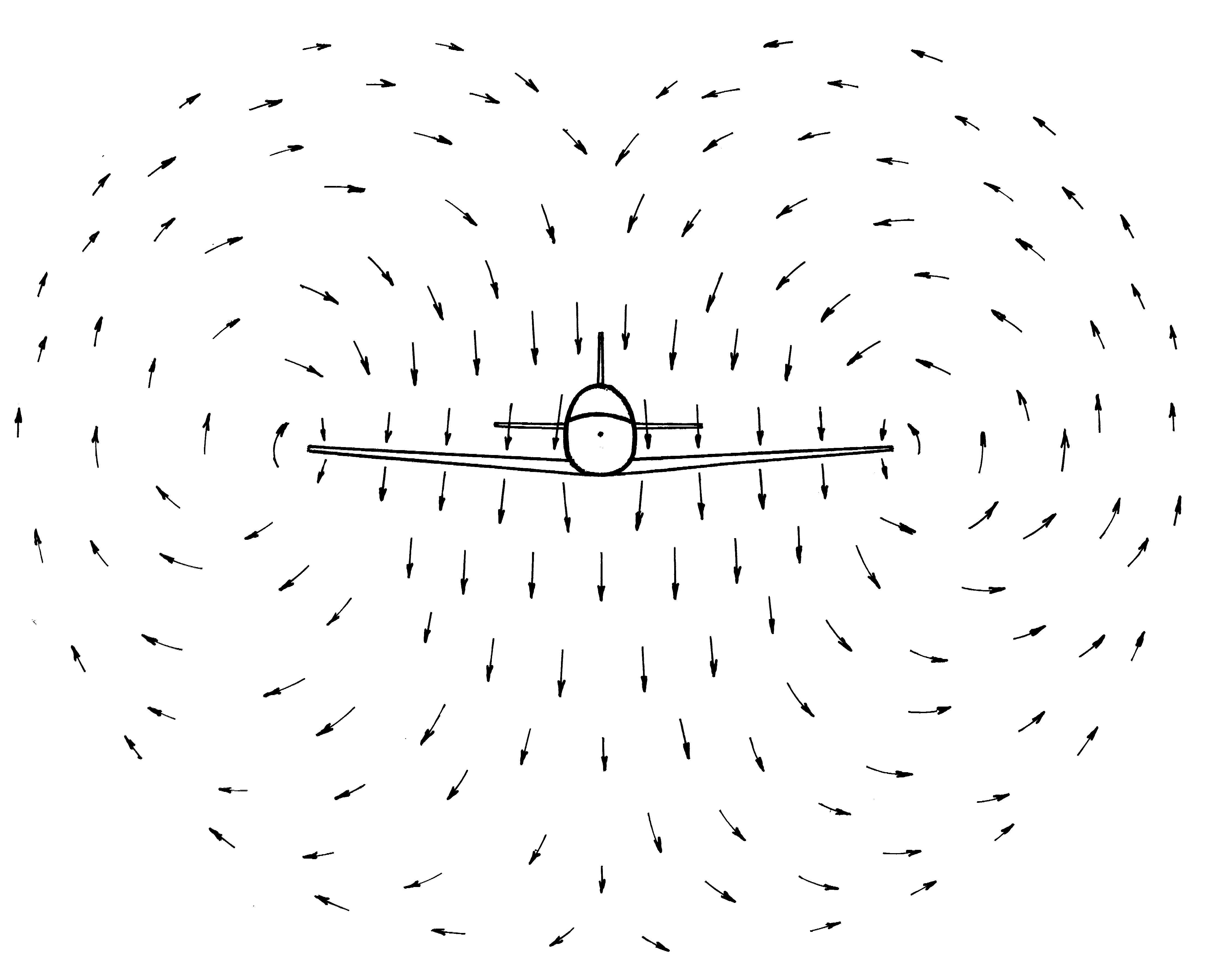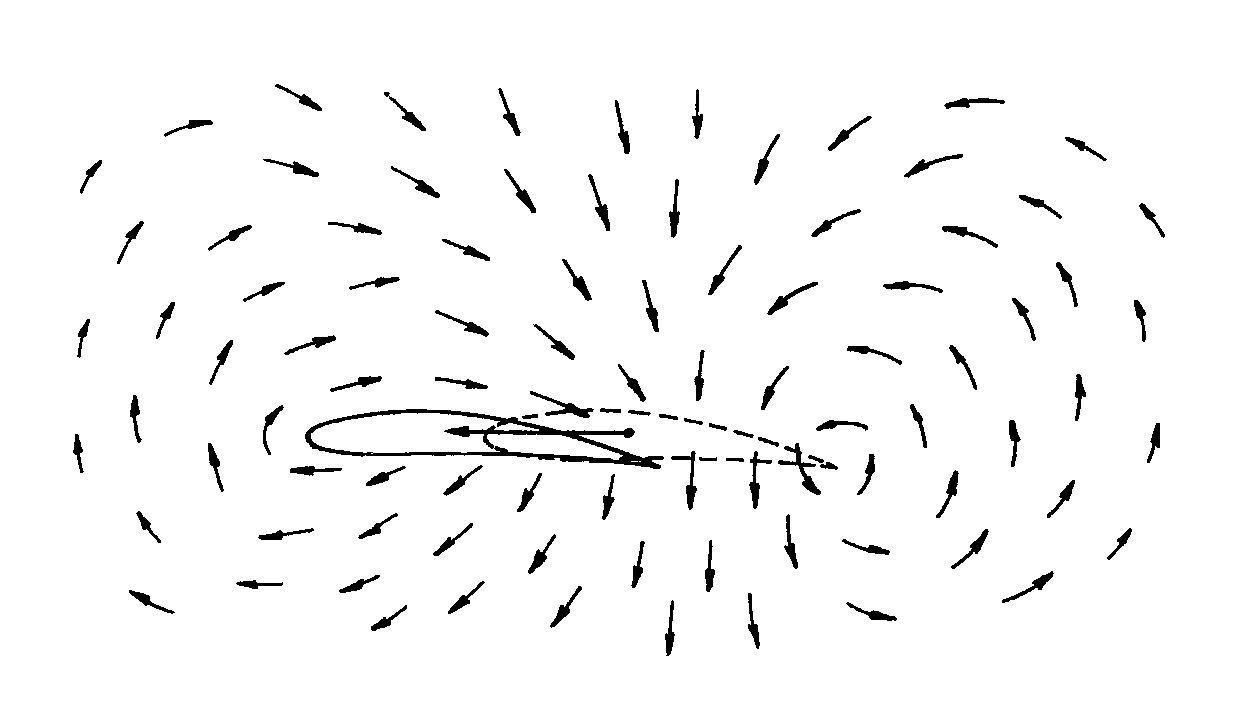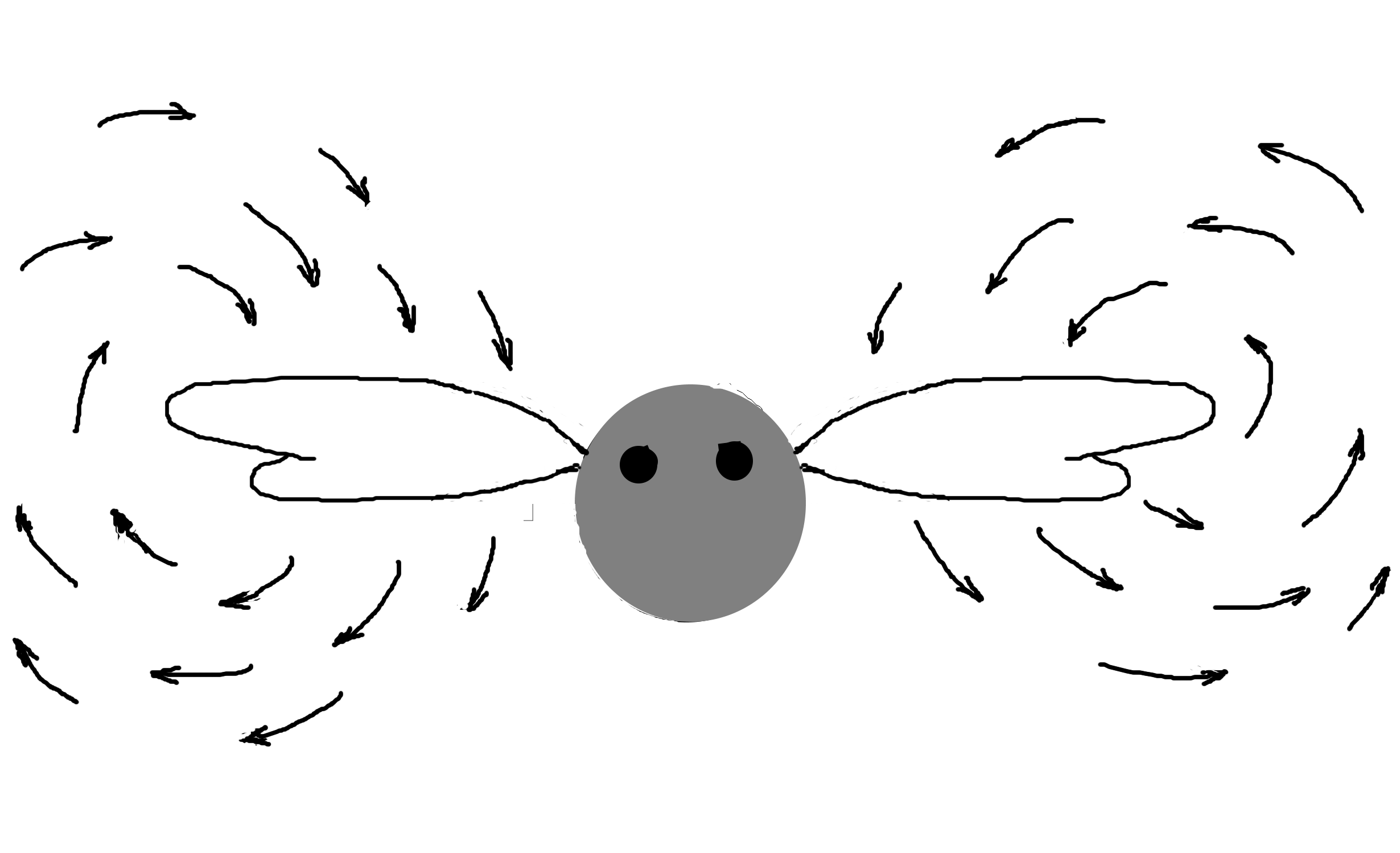
Also
here the vortices generated by the wings moving air from under the wing
to the top. And also these vortecies flows with about the half of the
velocity,
which the wings gives the air in the moment of emergence. These
vortices are named whith wake turbulence. There pushing down arise also
by the down wash, caused by the horizontal moving inclined plates.
In the following sketch is illustrate an airplane
wing, which has even only a very short forward movement like a wing of
a bumblebee. It caused the same vortices as the wing of the bumblebee
in the previous chapter.

Because an airplane but still continues to move forward, the
distance between the front and the rear vortex is widening. The front
vortex rotates around the airfoil, so that it is no longer visible as a
separate vortex like on the bumblebee wing. In a wind tunnel, only the
increased speed over the wing can be measured, leading to the
misinterpretation of the Bernoulli theory. Only with an exaggerated
angle of attack of the wing the air arises a vortex on the leading edge
like on the wing of the bumblebee. A plane then do not crash because it
has no more lift, but because the lift is no longer sufficient.
Overpowered aircrafts can hold above, although the wing is "stalled"
like on a bumblebee wing.
Vortices by flying objects arise
only by mechanical movements of air masses. The higher pressures under
and the lower above wings arise only by accelerete air masses. These
vortices are never compensation flows of overpressure below and under
pressure above wings, so logically that might be. Such only
compensation flows caused by pressure differences would be on place and
never fall down. The down fall of air by wings is that, what makes fly!


